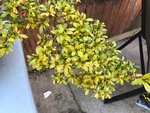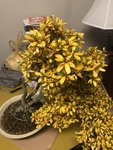Francesco84
Yamadori
Hi all! First post here and sorry to come with a problem but my entire satsuki was covered in all yellowish-green leaves about 14 days ago, which have now turned completey yellow and are starting to drop. That said, the leaves around each flowering bud have remained dark green and healthy. We had our first freeze in nyc a couple of weeks ago (25-30F for the night) and the day or two after is when I noticed the leaves turning yellow-greenish. Roots a bit on the dry side as well. I received the tree this summer from Delaware. No fall fertilization. Thinking maybe a stressed rootball with the combination of winter onset? Any thoughts would be greatly appreciated.




